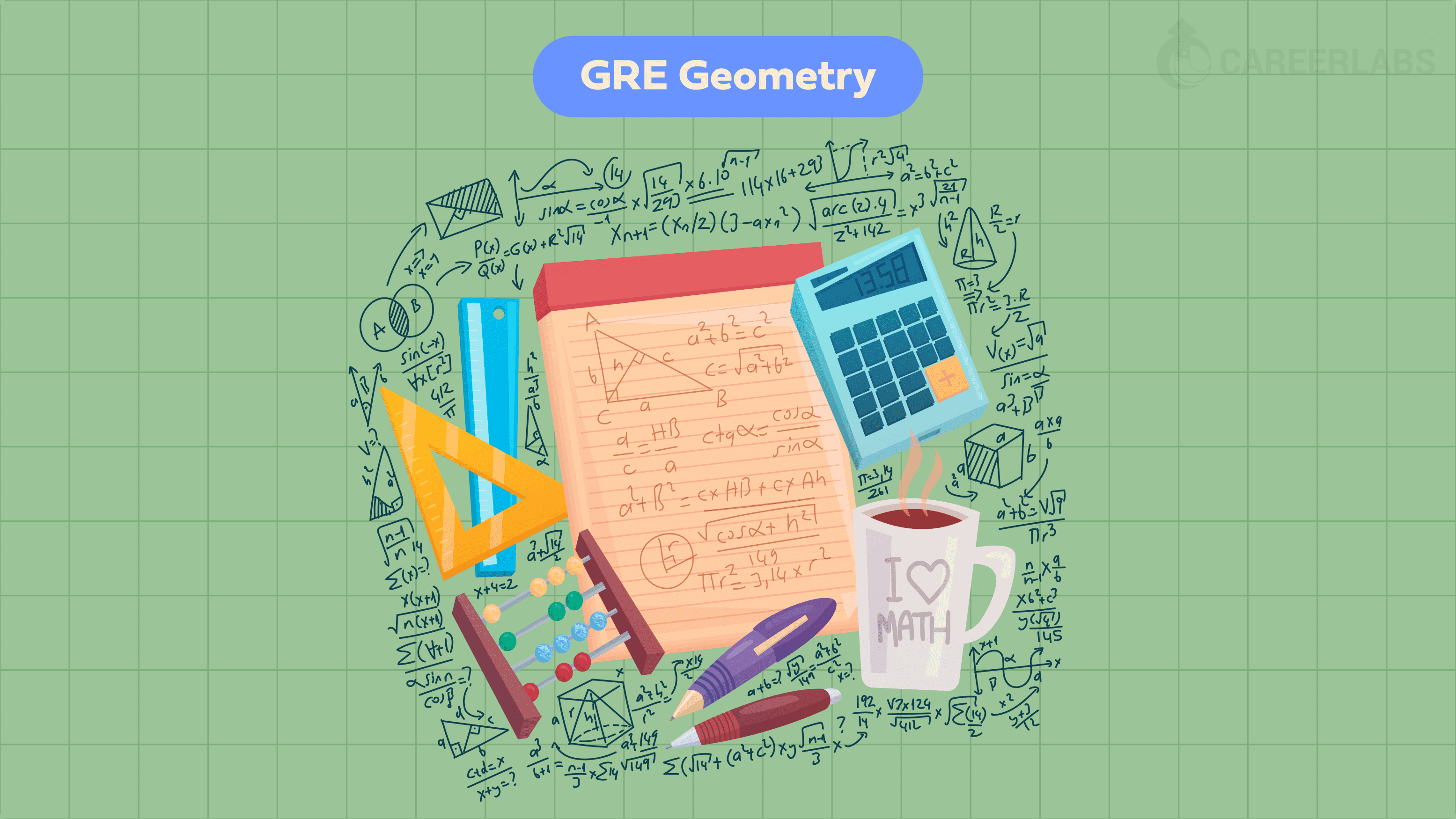The GRE Geometry topic requires good knowledge of all the concepts, formulas, and properties. It is one of the four major topics (Arithmetic, Algebra, and Data analysis) on which you will be evaluated in the exam. You will need to spend adequate time concentrating on the concepts of geometry.
Let us look at an outline of the GRE geometry syllabus below :
The topics include perpendicular and parallel lines, triangles — including isosceles, equilateral and 30°-60°-90° triangles — congruent and similar figures, other polygons, perimeter, three-dimensional figures, area, volume, circles, quadrilaterals, the Pythagorean theorem, and degree angle measurement.
The GRE geometry questions which you will come across in the exam will be of the following types: Numeric Entry, Multiple Choice questions or Quantitative comparisons.
Some of the important geometry formula are listed below :
- Squares:
| Area | A = S^2 (S = Side) |
| Perimeter | P = 4s |
- Rules of Angles:
- An acute angle is equal to 180 degrees
- A right angle is equal to 90 degrees
- An Obtuse angle is an angle between 90 and 180 degrees
- A straight line is 180 degrees
- Two lines that can never intersect and have the same slope are termed parallel lines
- When two parallel lines are intersected by a third line, it forms eight angles
- Two lines that intersect to form four congruent angles are called perpendicular lines. All of the four angles have a measure of 90 degrees.
| Area | A = πr^2 |
| Area of Sector | Area of sector = πr^2* central angle of sector /360 |
| Length of an Arc | Arc length = 2πr*central length of arc/360 |
| Circumference | C=2*π*r |
| Area | A = L*w |
| Perimeter | P = 2l+ 2w |
A polygon is by definition a closed figure which is formed by three or more line segments called sides. Some examples of polygons are — Pentagon, Triangle and Quadrilateral. If a polygon has n sides, it can be divided into (n-2) triangles. A polygon in which all the sides and all interior angles are congruent is called a regular polygon. The perimeter of a polygon is the sum of the length of its sides, the area of the polygon is the area of the region enclosed by the polygon.
- Triangles
There are three types of triangles — equilateral, isosceles and right.
- Equilateral – All sides are equal and all interior angles are 60 degrees
- Isosceles – Two sides are equal and the two angles opposite the two equal sides are equal in measure
- Right – A triangle with just one right angle. The side which is the longest (opposite the right angle) is called the hypotenuse and the two shorter sides are the “legs”.
- Pythagorean Theorem:
a^2 +b^2 = c^2 where a,b are two sides and c is the hypotenuse
| Area | A = ½*b*h ; where b=base, h=height |
- Trapezoids:
| Area | A = ½ (a+b)h ; where a=base 1, b= base 2, h=height |
- Rectangular Solids:
| Surface Area | SA = 2 (lw+lh+wh) |
| Volume | V = lwh ; where l=length, w=width, h= height |
- Parallelograms:
| Area | A = bh ; where b=base, h=height |
- Right Circular Cylinders:
| Surface Area | SA = 2πr^2 +2πrh ; where r= radius of circular section, h= height |
| Volume | V = πr^2 *h |
Tips and Tricks to Solve GRE Geometry Questions:
- Besides concepts of geometry, it is recommended that you first learn the key concepts like — the formula (perimeter, area, volume, circumference), the properties, relationship between angles.
- Another tip is to create flashcards with all important terms including diagrams and shapes of the geometric figures you are learning about.
- You can test your knowledge by practicing GRE geometry practice questions. This will help you to evaluate yourself and determine your familiarity with the concepts. These will also give you an idea of how the questions will be asked in the exam.
- On the day of the exam, don’t make assumptions of any values or terminologies in the given geometry questions.
- Many of the geometry questions in the exam don’t have a reference picture. So it is recommended that you draw a figure to help you understand the question in a better manner.
We trust that this article has helped you understand the basics of the GRE geometry section and the various properties associated with it.
Good Luck!
